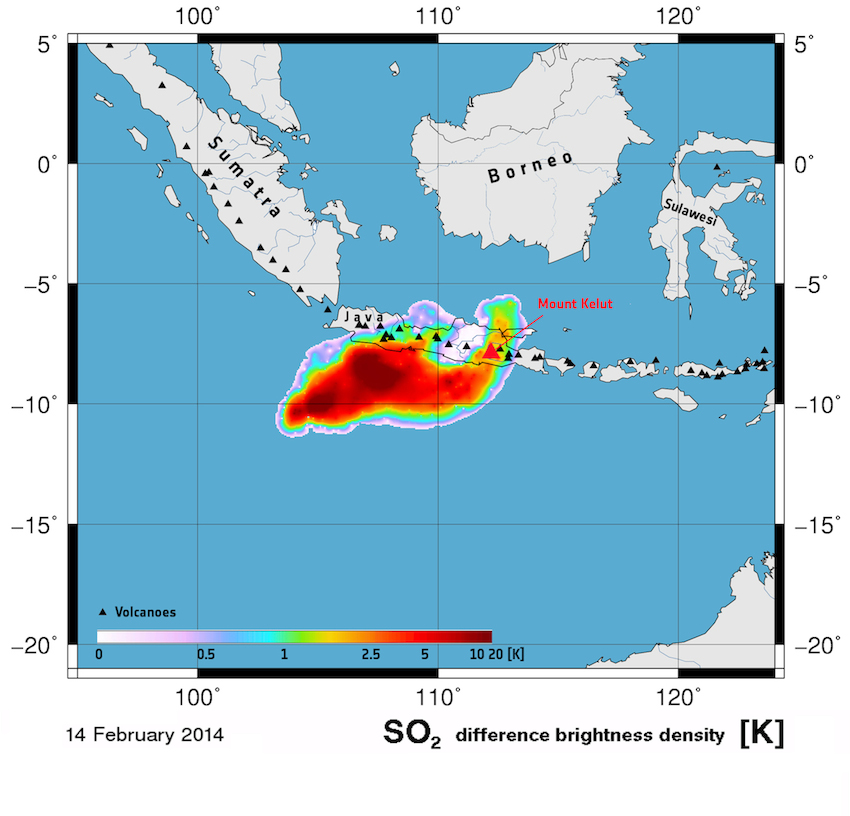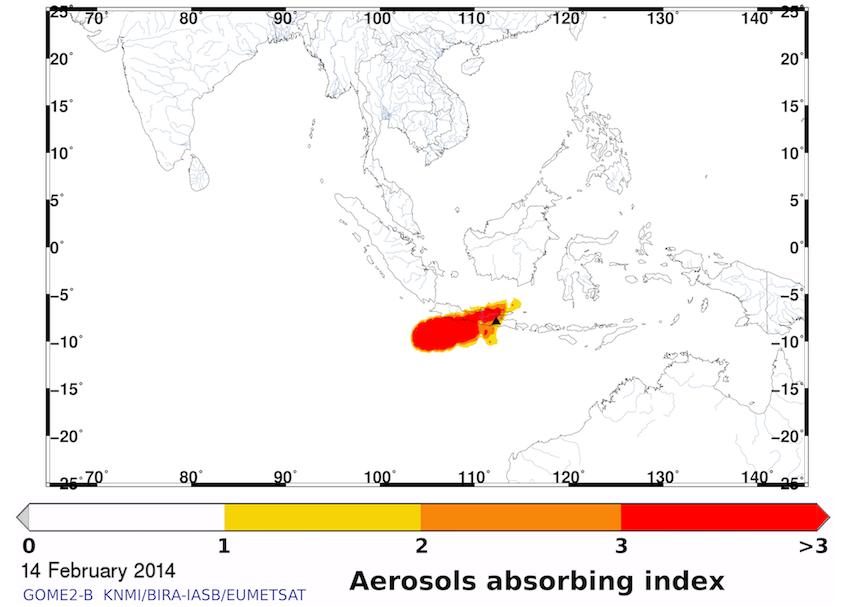The Smithsonian Institution's Global Volcanism Program about Kelut& Merapi
Global Volcanism Program = Merapi,
one of Indonesia's most active volcanoes, lies in one of the world's most densely populated areas and dominates the landscape immediately north of the major city of Yogyakarta. Merapi is the youngest and southernmost of a volcanic chain extending NNW to Ungaran volcano. Growth of Old Merapi volcano beginning during the Pleistocene ended with major edifice collapse perhaps about 2000 years ago, leaving a large arcuate scarp cutting the eroded older Batulawang volcano. Subsequently growth of the steep-sided Young Merapi edifice, its upper part unvegetated due to frequent eruptive activity, began SW of the earlier collapse scarp. Pyroclastic flows and lahars accompanying growth and collapse of the steep-sided active summit lava dome have devastated cultivated lands on the volcano's western-to-southern flanks and caused many fatalities during historical time. The volcano is the object of extensive monitoring efforts by the Merapi Volcano Observatory.
Global Volcanism Program = Kelut,
The relatively inconspicuous, 1731-m-high Kelut stratovolcano contains a summit crater lake that has been the source of some of Indonesia's most deadly eruptions. A cluster of summit lava domes cut by numerous craters has given the summit a very irregular profile. Satellitic cones and lava domes are also located low on the eastern, western, and SSW flanks. Eruptive activity has in general migrated in a clockwise direction around the summit vent complex. More than 30 eruptions have been recorded from Gunung Kelut since 1000 AD. The ejection of water from the crater lake during Kelut's typically short, but violent eruptions has created pyroclastic flows and lahars that have caused widespread fatalities and destruction. After more than 5000 persons were killed during an eruption in 1919, an ambitious engineering project sought to drain the crater lake. This initial effort lowered the lake by more than 50 m, but the 1951 eruption deepened the crater by 70 m, leaving 50 million cubic meters of water after repair of the damaged drainage tunnels. After more than 200 deaths in the 1966 eruption, a new deeper tunnel was constructed, and the lake's volume before the 1990 eruption was only about 1 million cubic met
Eruption of the Kelut volcano in Java, Indonesia,


| Attachment | Size |
|---|---|
| Ash_from_Kelut1.png | 238.78 KB |
| Sulphur_dioxide_from_Kelut1.jpg | 291.69 KB |
- Editor1's blog
- Login to post comments